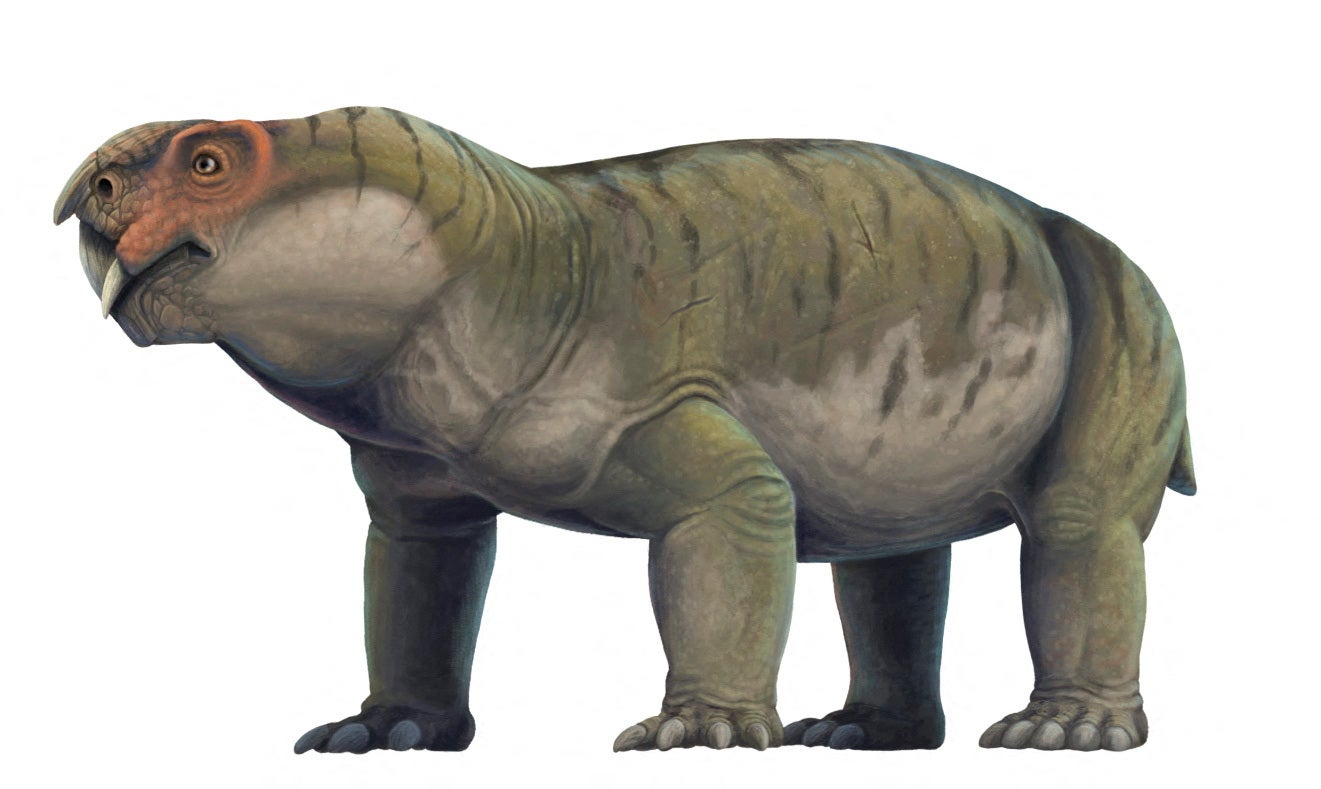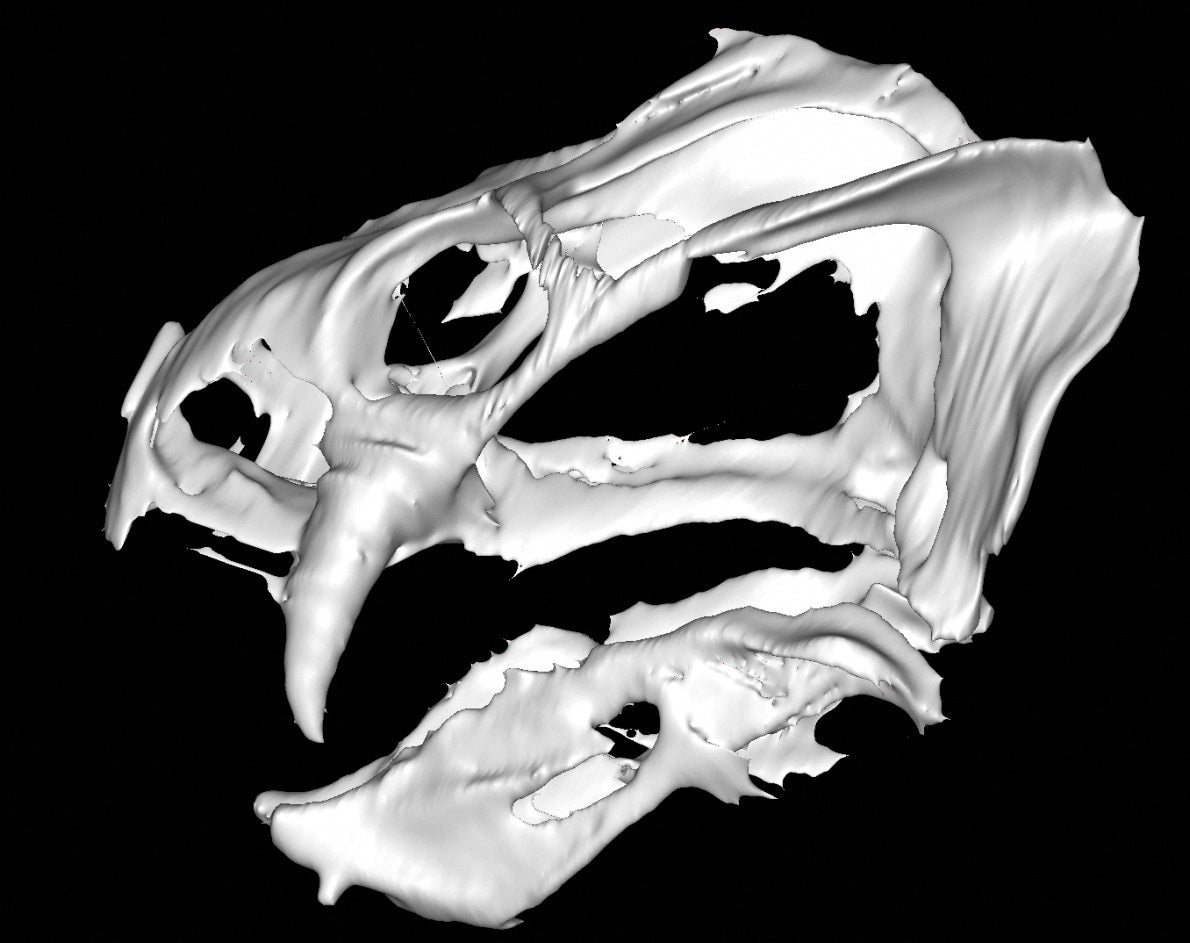Meet Gordonia – The squat pig with tusks and a reptile brain that lived in Scotland’s desert
Gordonia was about three feet long and weighed approximately 45 pounds

More than 250 million years ago, Scotland was a desert blanketed in sand dunes.
And one of the residents of this challenging landscape was a squat, vaguely pig-like mammal forerunner named Gordonia, with a pug face and two tusks protruding from beaked jaws.
Using high-resolution, three-dimensional imaging on a fossil of this Permian Period creature, researchers have been able to see its brain cavity and make a digital replica of the brain, providing insight into the size and composition of this crucial organ at an early stage in mammalian evolution.
To be clear, Gordonia’s brain was a far cry from that of a modern mammal. But the relative size of its brain compared to its body seemed to presage the intelligence that later helped mammals - including people - dominate Earth.
Gordonia, which lived about 254-252 million years ago, was a type of animal called a protomammal - a predecessor of mammals that still retained traits of reptilian ancestors.
“Overall, Gordonia’s brain looks more like a reptile than a mammal despite it being more closely related to us than to any modern living reptile,” said paleontology doctoral student Hady George of the University of Bristol, lead author of the study published this week in the Zoological Journal of the Linnean Society.
The front of Gordonia’s brain - the forebrain - is proportionally much smaller than that of any mammal, George said. While Gordonia’s brain is generally typical for an ancient mammal relative, an organ called the pineal body, dedicated to metabolic functions, was very enlarged, George added.
But there appear to be some early glimmers of what was to come.

“What we see is a brain that looks very different from ours, not a big balloon-like orb, but more of a long, arched tube. But even though its shape looks odd, when we measure its volume we can see that it was pretty big compared to the size of the body,” said University of Edinburgh paleontologist and study senior author Steve Brusatte.
“It’s so hard to measure intelligence in modern-day animals, and even more so with long-extinct species that we can never observe directly. But we can at least say generally that it would have been a smart creature for its time. In the increasing size of its brain relative to other animals of the time, we can sense the early evolutionary roots of our own enormous brains,” Brusatte added.
Gordonia was about three feet (one meter) long and weighed approximately 45 pounds. Its head was tall and wide. While it had a squat and pig-like build, its legs were not as long as those of a pig.
“The beak and tusks combination facilitated a herbivorous lifestyle, and especially plucking juicy roots out of the desert it made home,” George said.
It was a type of protomammal called a dicynodont, which first appeared around 265 million years ago and went extinct around 200 million years ago. As a group, dicynodonts survived the worst mass extinction in Earth’s history 252 million years ago at the end of the Permian - thought to have been caused by immense volcanic activity in Siberia - though Gordonia did not.
It was in the aftermath of that calamity that the first dinosaurs appeared about 230 million years ago. Mammals subsequently appeared about 210 million years ago, when they scurried around under the feet of the dinosaurs. Only after an asteroid strike 66 million years ago wiped out the competition did the mammals got their chance to dominate.
Discovered in 1997, the Gordonia fossil is a sandstone block containing a void perfectly capturing the skull and lower jaw.
“The brain of Gordonia resembles modern mammal brains very little, and does not possess any of the unique features that characterize mammalian brains. This highlights how much more the brain had to change to become one we would recognize today as a true mammal,” George said.
Join our commenting forum
Join thought-provoking conversations, follow other Independent readers and see their replies
Comments
Bookmark popover
Removed from bookmarks